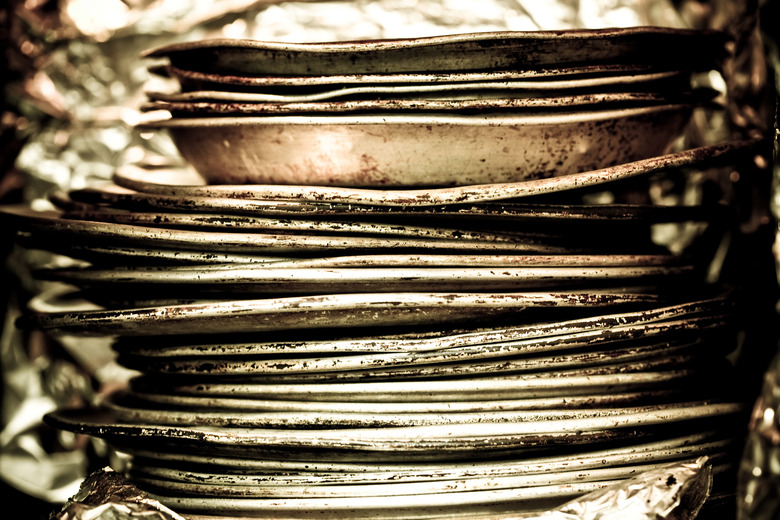Dissolving Kitchen Grease
We are all familiar with kitchen grease – solid, slick, stubborn and hard to remove. To get rid of kitchen grease you can use mechanical or chemical means to separate the grease from the surface it is on and remove it. The fastest methods incorporate chemical removal; however you may prefer to use mechanical methods.
Boiling Water
Boiling Water
Hot water is a mechanical method that works on two levels. The heat of the water liquifies solid grease. The liquified grease then floats on the layer of water where it can be removed using cloth or paper towels.
Dish Washing Liquid
Dish Washing Liquid
Dish washing liquid works by chemically breaking up or dispersing the grease. Surfactants, the active chemical in detergents, break apart the grease molecules surrounding them with water molecules. Once the grease is broken up, it is held in suspension by the dish washing liquid allowing you to wash away the grease.
Water-Displacing Lubricant
Water-Displacing Lubricant
Fats are generally insoluble in water. However, they are soluble in alcohol or oil-based solvents such as WD 40–a water-displacing lubricant. It may sound counter-intuitive to add an oil-based product to dissolve grease. However, by dissolving kitchen grease in a more easily removed oil such as water displacing sprays, you can remove stubborn grease stains. Spray the product directly on grease stains. Let stand 10 to 15 minutes. The fat becomes soluble in the product. It can now be easily removed by wiping the product up with a towel or paper napkins. If any residue remains, wipe with a soap solution.
Alcohol
Alcohol
Another method of dissolving stubborn kitchen grease is to use isopropyl alcohol. Isopropyl alcohol works in a similar manner to water-displacing lubricants. It breaks up the grease into smaller particles and surrounds it with alcohol molecules, in effect dissolving the grease. You can then wipe the alcohol away with the grease.
